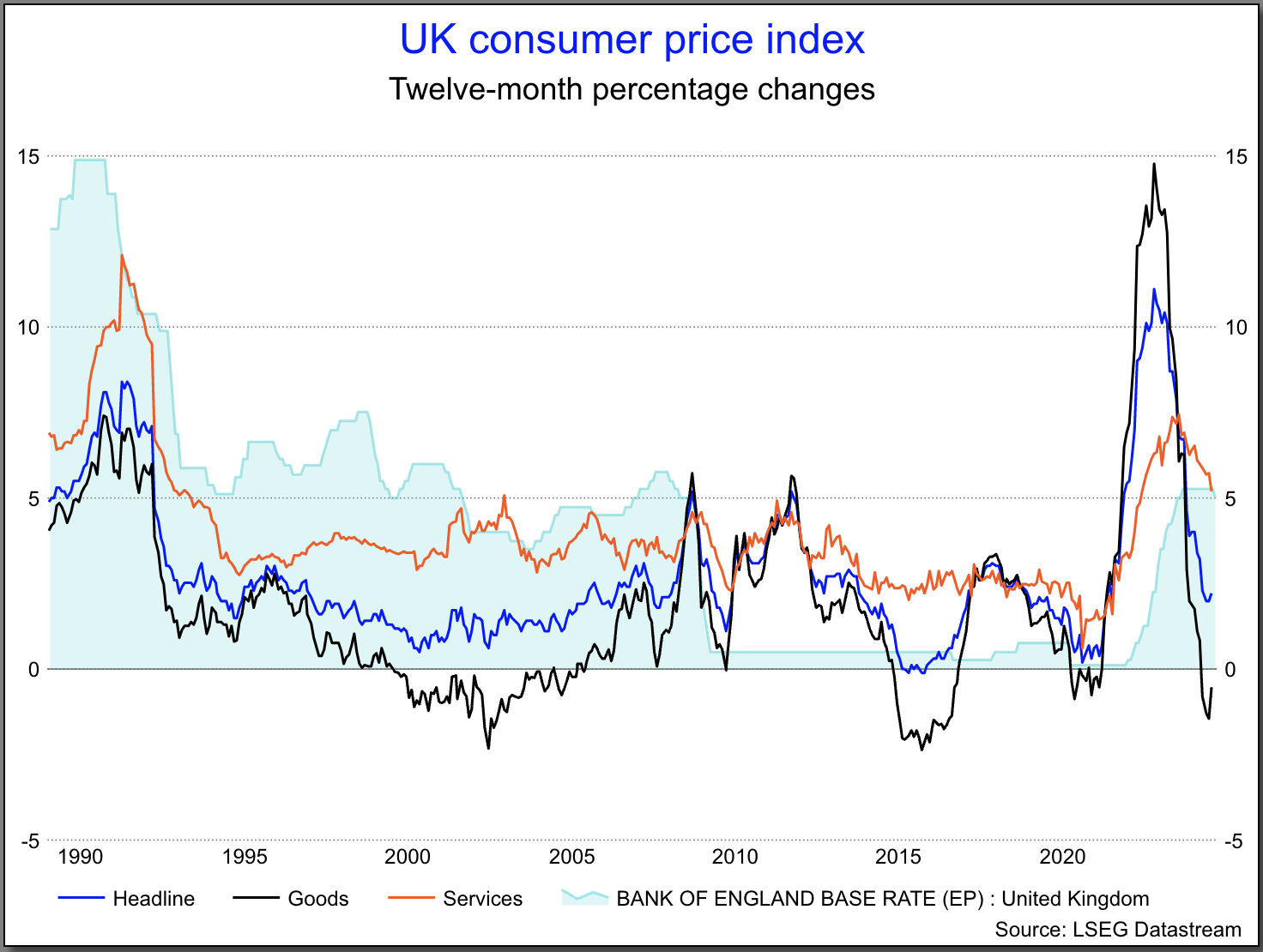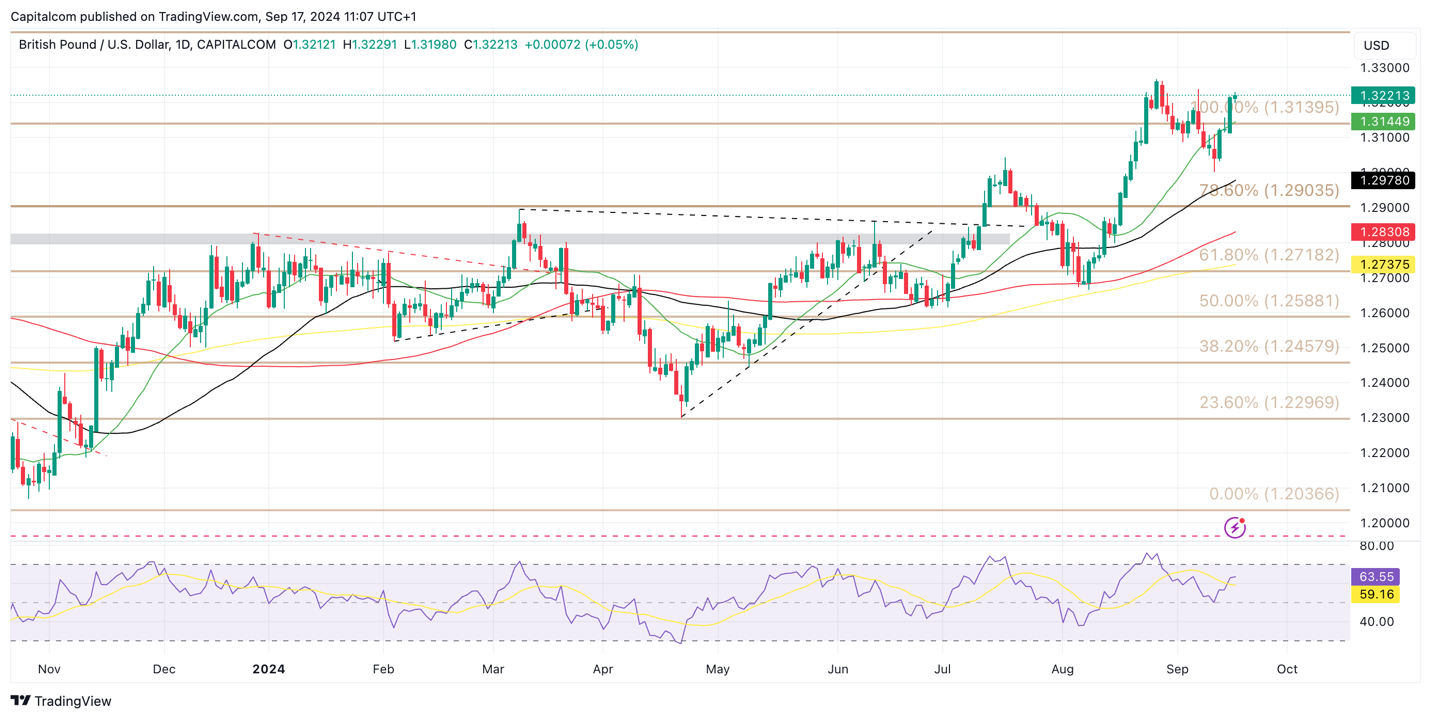BoE Preview: no change expected but forward guidance will be key
The BoE is forecasted to leave rates unchanged in September as UK CPI remains stubborn.
Markets expect the Bank of England (BoE) to keep rates unchanged at its meeting on Thursday. Current pricing shows a 63% chance of no change versus 37% in favour of a 25-basis point cut. The central bank lowered rates in August for the first time since March 2020, the start of the pandemic.
A rate cut this week would take markets by surprise. Similar to what we’ve seen from the European Central Bank (ECB) it’s likely that the BoE will want to give more time between cuts to assess the impact on the economy. After all, there seems to be no rush to cut rates drastically – a recession seems to be holding off. Inflation ticked higher in July, but that was widely expected as the drop in energy prices last year has started to be priced out of the yearly figure. The data for August came in unchanged at 2.2% when the data was released this morning, with core inflation rising again as wage inflation continues in the services sector. The fact that the data is released so close to the actual meeting day suggests the impact on the rate decision is likely to be limited.

Prior to the BoE, the Federal reserve will announce whether they have decided to finally cut rates when they meet on Wednesday. There seems to be no doubt that a rate cut is coming. The question is the size of the cut. Jerome Powell’s guidance following the decision is likely to be a key driver of volatility this week, so we could see the impact of the BoE meeting slightly drowned out by this, especially if the bank keeps rates unchanged as widely expected.
With regards to forward guidance, Governor Bailey is likely to continue to keep his cards close to his chest. The central bank has had a cautious approach to cutting rates as it remains unconvinced that inflation has been fully tamed. Current pricing shows another 50 basis points of cuts for this year, with two 25-bps cuts in November and December. The central bank will also have to be aware of the first Budget from the new government, expected at the end of October, which will likely include a number of tax rises. A tighter fiscal policy could see a further increase in rate cut expectations.
Regarding the impact of the meeting in markets, we could see some movement in gilts if expectations about future policy shift following the meeting. If the cautious tone remains, we could see a tightening in gilt prices, recovering some of the lost momentum over the past few weeks.
GBP/USD daily chart

Past performance is not a reliable indicator of future results.
With regards to GBP/USD, the majority of the momentum in recent weeks has stemmed from the dollar side of the trade. It’s likely that this setup continues over the next few days as the Federal Reserve meeting takes the majority of the attention, being the likely driver of market volatility. The expectation that the Fed will have to deliver larger rate cuts over the coming months could continue to drive bullishness in GBP/USD, as it approaches a two-and-a-half-year high.